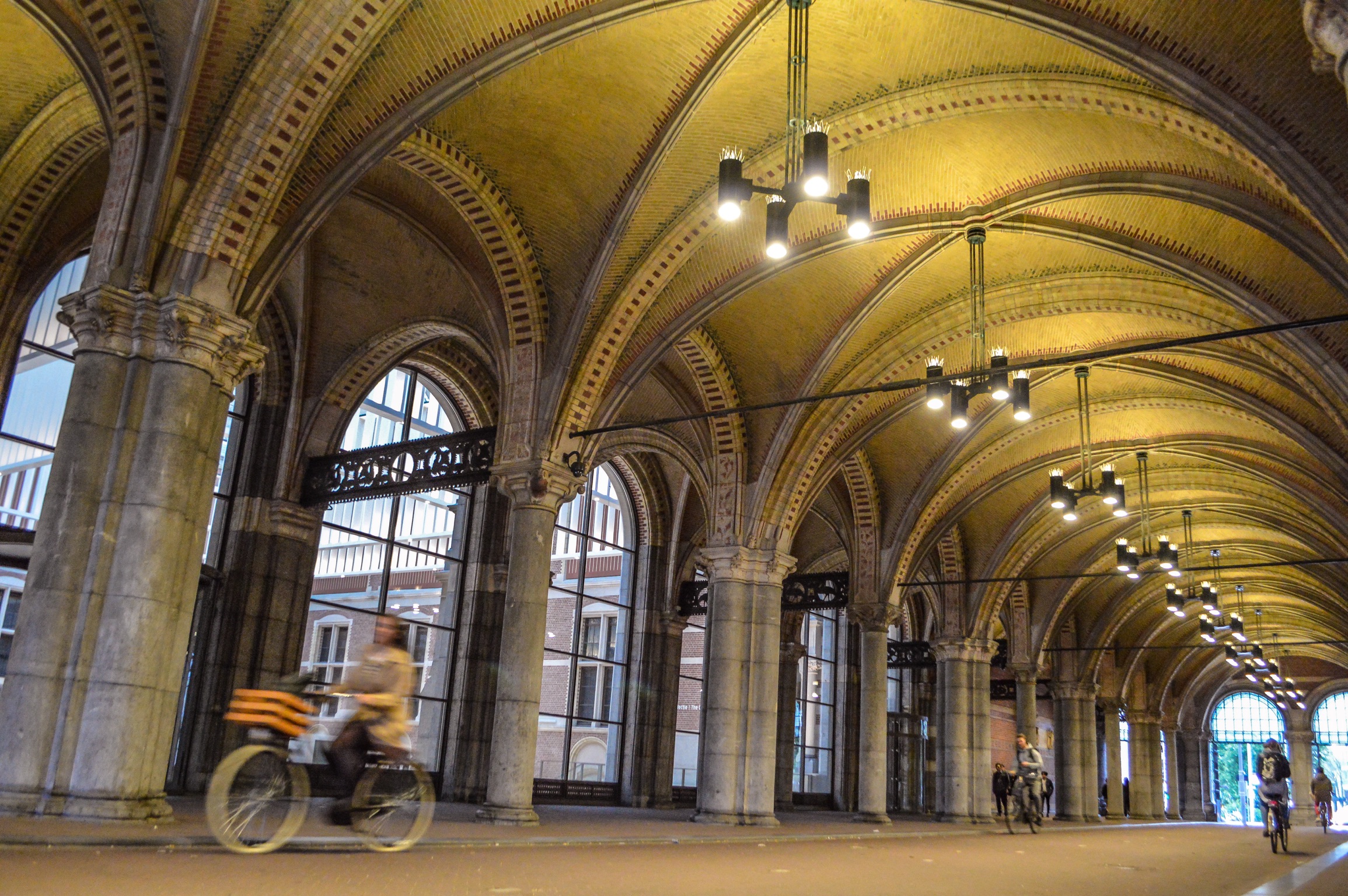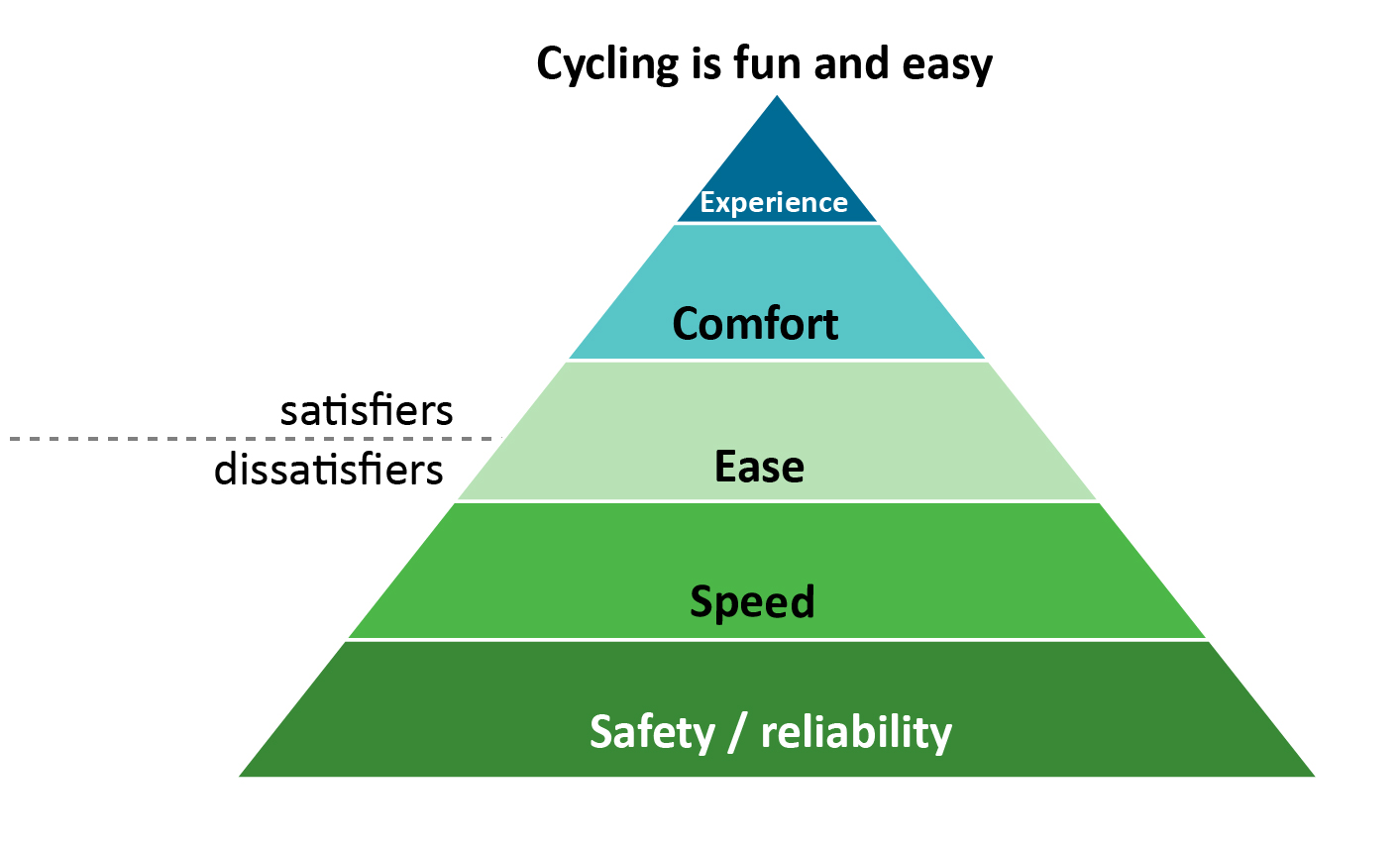Innovation
The elements of the Mobility Donut: Mobility Happiness

Photo by: Melissa and Chris Bruntlett
When it comes to how we experience transportation, it’s not simply travelling from A to B. We daydream while staring out the window (of the car, bus, tram or train) and let our thoughts run wild as the landscape races past us. When we cycle, sometimes we don’t choose the most direct route, but instead take a more indirect, enjoyable option. Routes with fewer traffic lights, smoother tarmac or good lighting. Many of us also prefer to walk in a natural environments rather than along a busy road. For my travels, I (like many others) consciously choose the cycle tunnel under the Rijksmuseum in Amsterdam whenever cycling in the Dutch capital. I also have fond memories of visiting the Kröller-Müller museum on one of the provided white bikes, and crossing a river on a ferry is still an adventure!
The Experience of travel
Everyone who travels find value in the experience. Particularly now, with so many of us still working from home, we have realised that there is a feeling of happiness that can come from being on the road. One year ago, who would have thought that we would miss the trip to work, school or the sports club? In giving attention to the beauty and quality of the built and natural environment, the journey is also about experiencing and living, increasing the feeling of individual mobility happiness.
In the world of mobility, mobility happiness is the enjoyment of travelling experience by everyone, regardless of the – economically speaking – most efficient investment. In contrast to mobility poverty, mobility happiness contributes to the well-being and satisfaction of people when they are in transit.
__________________________________________________________________________________________________
Mobility Happiness: mobility is a means to a meaningful and happy life. Mobility happiness is about your own living environment, the journey to your destination, and the happiness you experience when you reach it. The vision of De Verkeersonderneming (The Traffic Company) states that happiness in mobility is also divided into a social, economic and cultural aspect. See also the article: Mobility Happiness for Everyone (in Dutch) or do the Mobility Happiness Test (also in Dutch)!
__________________________________________________________________________________________________
Despite that, or actually in part because there is currently a lot of focus on the most important, large transport flows (excessive mobility), it already became clear in our first blog about mobility poverty that the use of these flows is not self-evident for everyone. Many are hindered in their participation in social activities because of limited mobility. Public transport may be too expensive, they do not have access to a car, or they are physically limited in their mobility. This puts their sense of mobility happiness to the test. Therefore the concepts of mobility poverty, excessive mobility and mobility happiness are closely linked.
Within our projects, we also strive to achieve happiness in mobility. We often use Maslow’s Pyramid to map out cycling happiness and apply Csiksentmihaly’s flow theory.
 Maslow’s bicycle pyramid
Maslow’s bicycle pyramid
The road to mobility happiness
In our opinion, mobility happiness is about finding the golden mean; a rational consideration by people whether or not to be mobile at a certain time of day, to choose a certain means of transport or a certain route. The external effects of various choices are included in this consideration, be it at the expense or in favour of yourself or society, such as environmental, traffic safety and health effects. These choices can be partly determined by steering for proximity in spatial planning policy, helping to reduce the potential for mobility poverty and excessive mobility.
We invite you to join us in taking up the challenge of working together towards a happier mobility society! When do you experience mobility happiness? How can we ensure that you, and everyone around, become more happy in mobility?
__________________________________________________________________________________________________
This blog is part of a series of four entries focused on the Mobility Donut. Each week, we will explain an element as experienced through our work and the mobility experience in the Netherlands. We developed this concept based on the ideas presented in Doughnut Economics, created by economist Kate Raworth. The Mobility Donut links mobility poverty, basic mobility, mobility happiness and excessive mobility. We are currently developing the Mobility Donut Game to help our clients find the balance in mobility policy. Interested? Please contact Babet Hendriks.

